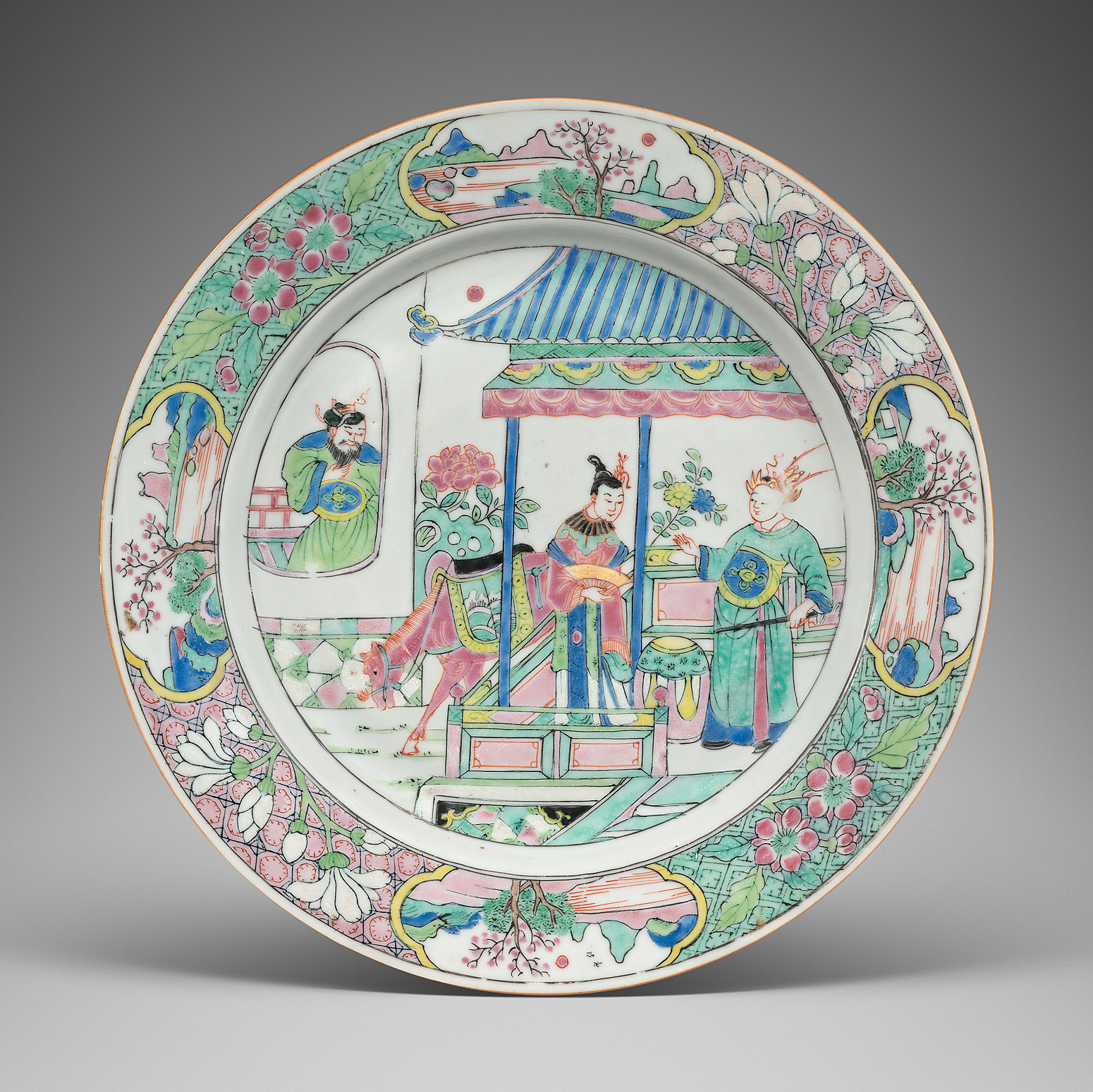The plate enameled in the famille rose-verte palette, in beautiful pastel tones. It is elaborately and finely decorated with the bearded Dong Zhuo on Fengyi pavilion terrace gesturing towards the soldier Lü Bu, with a spear and feathery headdress, together with the elegant lady Diaochan. All taking place within a garden setting with gnarled rock, trees, a garden seat and a horse. On the rim are painted four cartouches with landscapes.
